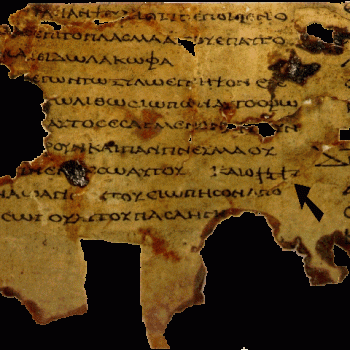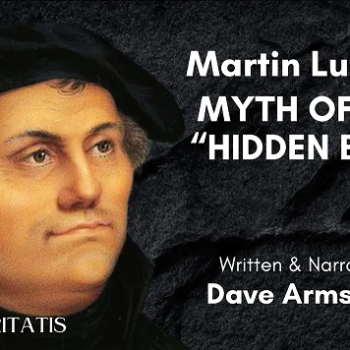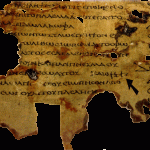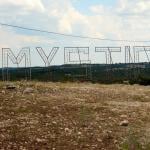
Atheist and anti-theist Bob Seidensticker, who was “raised Presbyterian”, runs the influential Cross Examined blog. He asked me there, on 8-11-18: “I’ve got 1000+ posts here attacking your worldview. You just going to let that stand? Or could you present a helpful new perspective that I’ve ignored on one or two of those posts?” He also made a general statement on 6-22-17: “Christians’ arguments are easy to refute . . . I’ve heard the good stuff, and it’s not very good.” He added in the combox: “If I’ve misunderstood the Christian position or Christian arguments, point that out. Show me where I’ve mischaracterized them.”
Such confusion would indeed be predictable, seeing that Bob himself admitted (2-13-16): “My study of the Bible has been haphazard, and I jump around based on whatever I’m researching at the moment.” I’m always one to oblige people’s wishes if I am able, so I decided to do a series of posts in reply. It’s also been said, “be careful what you wish for.” If Bob responds to this post, and makes me aware of it, his reply will be added to the end along with my counter-reply. If you don’t see that, rest assured that he either hasn’t replied, or didn’t inform me that he did. But don’t hold your breath.
Bob (for the record) virtually begged and pleaded with me to dialogue with him in May 2018, via email. But by 10-3-18, following massive, childish name-calling attacks against me, encouraged by Bob on his blog (just prior to his banning me from it), his opinion was as follows: “Dave Armstrong . . . made it clear that a thoughtful intellectual conversation wasn’t his goal. . . . [I] have no interest in what he’s writing about.”
And on 10-25-18, utterly oblivious to the ludicrous irony of his making the statement, Bob wrote in a combox on his blog: “The problem, it seems to me, is when someone gets these clues, like you, but ignores them. I suppose the act of ignoring could be deliberate or just out of apathy, but someone who’s not a little bit driven to investigate cognitive dissonance will just stay a Christian, fat ‘n sassy and ignorant.” Again, Bob mocks some Christian in his combox on 10-27-18: “You can’t explain it to us, you can’t defend it, you can’t even defend it to yourself. Defend your position or shut up about it. It’s clear you have nothing.” And again on the same day: “If you can’t answer the question, man up and say so.” And on 10-26-18: “you refuse to defend it, after being asked over and over again.” And again: “You’re the one playing games, equivocating, and being unable to answer the challenges.” Bob’s cowardly hypocrisy knows no bounds. He still hasn’t yet uttered one peep in reply to — now — 30 of my critiques of his atrocious reasoning.
Bob’s words will be in blue. To find these posts, word-search “Seidensticker” on my atheist page or search “Seidensticker Folly #” in my sidebar search (near the top).
*****
In his article, More of the Top 20 Most Damning Bible Contradictions (Part 6) (4-18-19), Bible-Bashing Bob made a number of idiotic arguments: claiming contradiction when there is no logically necessary contradiction at all (a fault extremely common in atheist biblical “exegesis”). Let’s take a look at one of the two arguments he presents, entitled: “Women brought spices to the tomb (or not).”
The importance of spices from a plot standpoint is that they’re the motivation for the women’s visit to the tomb on the Sunday after Jesus’s crucifixion. You need to get someone there to discover the empty tomb.
This is pure cynical speculation, and of little use from any standpoint: logical, exegetical, literary . . . It’s as ridiculous as asserting: “The importance of King Ferdinand and Queen Isabella from a plot standpoint is that they’re the motivation for Columbus’ trip across the Atlantic Ocean. You need to get someone there to discover America.”
No serious biblical exegete approaches the text of the New Testament in such a silly way. But, as I have noted many times, anti-theist atheists like Bob approach the Bible as a butcher approaches a hog. They’re not interested in understanding it as it is, or in discovering theological or historical truths in the text (even if they don’t believe in the theology; one need not be, for example, a Muslim in order to want to accurately interpret the Quran).
They’re only there to lie about the Bible and distort what it teaches, for the purpose of their own agenda of casting as much doubt, suspicion, and mockery upon the Bible, Christians, and Christianity as possible. Bob has it down to a fine art. But he makes really dumb pseudo-arguments, which is why this is now the 31st time I have roundly refuted them (and it is virtually certain that he will ignore this article as well, making it 31 straight times he has done so).
When the Sabbath was over, Mary Magdalene, Mary the mother of James, and Salome bought spices so that they might go to anoint Jesus’ body. Very early on the first day of the week, just after sunrise, they were on their way to the tomb and they asked each other, “Who will roll the stone away from the entrance of the tomb?” (Mark 16:1–3)
Several commenters (and the author of Mark himself) have noted another plot hole: why would the women bother to make the trip with no way to roll back the stone at the doorway? The previous verse makes clear that the women had watched the burial and knew about the stone.
This is actually a fair question, but it’s not that difficult at all to plausibly answer. One can imagine any number of analogous scenarios where people set out to accomplish a task, knowing that there are obstacles (perhaps insuperable ones) in their way to overcome. But they try to do so. So, for example, we had an incident where we locked the keys in our car on a trip to Alaska in 2017.
We could have said (and may actually have said something like): “we’re gonna go get the car window open in order to get the keys locked inside. But where can we find a piece of wire to do so?” It turns out that we were at a campground, and we walked (after having inquired of a few campground neighbors) a good mile to the office, where a wire was obtained, leading to success.
Thus, in this scenario, the following may very well have been the thought process of the women going to anoint Jesus:
1) We would like to go anoint Jesus’ body.
2) One difficulty facing us, if we want to do that, is that there is a large stone in front of the tomb. Someone will have to remove it, as it is too heavy for us.
3) Who will or can roll away this stone?
4) Perhaps we can enlist some others to help us, on the way there.
#1 and #3 are present in the text. #2 is the assumed premise of #3: unstated in the text. #4 is simply not mentioned, but it’s perfectly plausible. And if that thought was present, then the text as it stands is not inexplicable at all.
But set that aside.
I didn’t, but I appreciate Bob’s ever-present thoughtfulness concerning Christian sensibilities.
The gospel of John tells a different story about who applied the spices. Rewind to Friday afternoon:
With Pilate’s permission, [Joseph of Arimathea] came and took the body away. He was accompanied by Nicodemus, the man who earlier had visited Jesus at night. Nicodemus brought a mixture of myrrh and aloes, about seventy-five pounds. Taking Jesus’ body, the two of them wrapped it, with the spices, in strips of linen. This was in accordance with Jewish burial customs. (John 19:38–40)
Seventy-five pounds of spices? Have you ever carried a 75-pound backpack or lifted a 75-pound weight at the gym? That sounds like an impractical weight and a pointlessly extravagant gift, but let’s set that aside as well.
Yeah, this time we will. I’m sure someone has written about the burial custom somewhere. But I note in passing that the Jewish historian Josephus in fact informs us that forty pounds of spices were used to anoint the well-known elder R. Gamaliel (Antiquities of the Jews, Book 17c.8, s.3).
Now the story has men applying the spices. In John’s story, the women (or woman) goes for no reason: “Early on the first day of the week, while it was still dark, Mary Magdalene went to the tomb” (John 20:1). No reason, that is, except as a literary prop to discover the empty tomb. . . .
Depending on the gospel you pick, women go to the tomb to apply spices Sunday morning (but didn’t actually use them) or men successfully apply the spices Friday afternoon.
This is an absolutely classic, textbook example of an atheist asserting a supposed biblical contradiction, when it has not been demonstrated at all: not in the slightest. It happens all the time. Bob has done it literally hundreds of times in his pathetic sophistical polemics. First of all, just because John does not state the reason why Mary went to the tomb, it doesn’t follow that no reason existed. This is not a contradiction. It’s simply Bible-Bashing Bob barging in with the unwarranted assumption that there was no reason. In fact, Mark 16:1 (seen above; cf. Lk 23:55-56; 24:1) did provide the reason Mary Magdalene went there.
One might say, by the same token: “Early on the first day of the week, while it was still dark, Bob Seidensticker went to the bathroom”. Did he go there for “no reason” too? Or is it reasonable to assume that he must have had some reason, which was not stated in this particular description, but also is not that difficult to surmise? Maybe an additional account (say, Bob’s diary) could conceivably inform us that he went to empty his bladder, comb his hair, and brush his teeth (and perhaps also to spend a minute admiring a sophist in the mirror).
Then Bob turns around and does the same stupid thing again. He claims we have to choose between men applying spices, or women, later on. Why must we choose? Why can’t both things be true? This is what is called a false dichotomy. They certainly can both be true. Just because Bob in his infinite wisdom doesn’t seem to be able to grasp that perfectly possible scenario, doesn’t prove that it is impossible.
I ran across a wonderful article: “101 ‘Cleared-Up’ Contradictions In The Bible”. #81-89 dealt with the biblical Resurrection accounts. #81 and #84 deal directly with Bob’s argument (with which we shall conclude):
81. Was Jesus’ body wrapped in spices before burial in accordance with Jewish burial customs (John 19:39-40), or did the women come and administer the spices later (Mark 16:1)? (Category: the texts are compatible with a little thought)
John 19:39,40 clearly states that Joseph and Nicodemus wrapped the body in 75 pounds of myrrh and aloes, along with strips of linen. We also know from the synoptic writers that the body was placed in a large shroud. There is no contradiction here. The fact that the synoptics do not mention the spices during the burial does not mean that they were not used.
If Mark 16:1 is taken to mean that the women were hoping to do the whole burial process themselves, they would need the strips of linen as well, which are not mentioned. They simply wished to perform their last act of devotion to their master by adding extra spices to those used by Joseph.
As Yahshua died around the ninth hour (Mark 15:34-37), there would have been time (almost three hours) for Joseph and Nicodemus to perform the burial process quickly before the Sabbath began. We need not suppose that there was only time for them to wrap his body in a shroud and deposit it in the tomb. . . .
84. Did the women go to the tomb to anoint Jesus’ body with spices (Mark 16:1; Luke 23:55-24:1), or to see the tomb (Matthew 28:1), or for no reason (John 20:1)? (Category: the texts are compatible with a little thought)
. . . We know that they went to the tomb in order to put further spices on Yahshua’s body, as Luke and Mark tell us. The fact that Matthew and John do not give a specific reason does not mean that there was not one. They were going to put on spices, whether or not the Gospel authors all mention it. We would not expect every detail to be included in all the accounts, otherwise there would be no need for four of them!
***
Photo credit: Descent from the Cross (1697), by Jean Jouvenet (1644-1717) [public domain / Wikimedia Commons]
***













